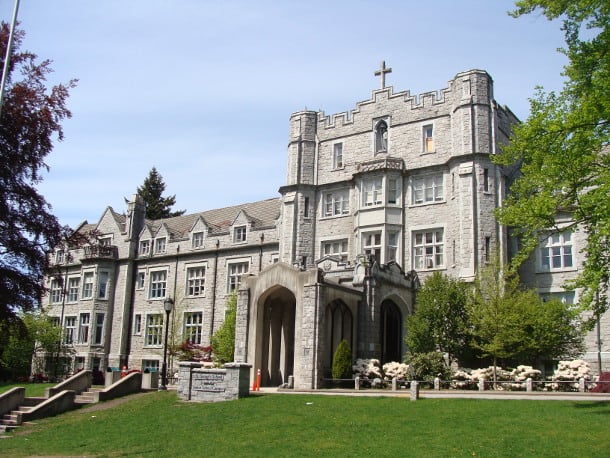Private schools will collect nearly half a billion dollars in public funding from the B.C. government during this school year. This is in addition to other public subsidies to private schools — including elite prep schools — like tax exemptions.
The funding — $491 million — is more than double the amount provided in 2000, even adjusting for inflation. This far outstrips the growth in funding to public K-12 education over the same period.
In contrast, half the provinces in Canada, sensibly enough, don’t provide this type of public funding to private schools at all.
The bulk of the private school subsidies in B.C. flow to two major categories: first and foremost, religious schools, and, second, high-tuition elite prep schools.
The public subsidy is allocated using a formula that provides funding at a rate of either 50 per cent or 35 per cent of per-student funding in the public school system. Schools that charge more in tuition fees and spend more per student get the lower level of funding.
Additional forms of public subsidy for private schools include property tax exemptions, tax breaks on donations and tuition and even a child care tax credit on a portion of tuition attributed to recess and lunch, a tax advantage that prep schools like Vancouver’s St. George’s School have promoted to their clientele.
Do most British Columbians want public resources directed to the private school system? The answer, perhaps not surprisingly, is no.
Repeated public opinion polls have found that about two-thirds of British Columbians oppose public funding for private schools, with this number rising to four in five opposed in the case of elite prep schools.
Even as subsidies flow to private schools, funding for public schools has failed to keep up with needs.
Inadequate funding for students with special educational needs is one of the most glaring gaps. An analysis from the BC Teachers’ Federation found special education funding from the province only covers about two-thirds of school districts’ actual special education spending, a shortfall that “creates austerity pressures to ration special education services at the district level and results in the redirection of funds from other areas with their own pressing needs.”
For at least two decades public schools have endured chronic underfunding, illegal ripping up of teachers’ contracts, school closures and expansion of class sizes under the previous BC Liberal provincial government. Teacher shortages and recruitment challenges are another long-standing problem that has only been worsened by the pandemic. Given that B.C. has among the lowest starting salaries for teachers in the country, about $8,000 lower than in Alberta, this is no surprise.
B.C.’s educators have accomplished a remarkable amount under these circumstances. But there is a cost to pay for underfunding. There is an urgent need to invest in our public schools and fix the broken provincial funding formula, especially as it relates to special educational needs. Few things are more important to a society’s long-term success than a strong and inclusive public education system.
B.C. has more than enough capacity to make that reinvestment. We’re an extremely rich province, but an increasingly unequal one.
Taking almost $500 million in taxpayer funding from private schools and redirecting it to the public system is one measure that could help.
That simple change to funding regulations would provide a seven-per-cent increase in public school funding to address the needs of students.
Private school backers say that if subsidies stop, some students will move back into the public system, increasing costs.
That may be so. However there is no straightforward relationship between private school enrolments and public subsidy levels. For example, Alberta has higher private school subsidy rates than B.C. but lower enrolment levels.
Regardless, if there was a trend of private school students returning to public classrooms after the withdrawal of subsidies, that’s all to the good. A strong universal public education system can be one of the great equalizers in our society.
One obvious place to start is phasing out public funding to the elite, expensive prep schools classified as “Group 2” under the province’s funding rubric. These schools, with high tuition fees, receive more than 10 per cent of publicly funded subsidies to private schools.
The group consists largely of elite schools like Vancouver’s St. George’s, which charges tuition fees of $29,600 per year for “day school” students (rising to over $60,000 per year for boarding students).
It’s just one of more than two dozen publicly subsidized private prep schools, among them Crofton House School, with $27,200 tuition, West Point Grey Academy ($26,860), Stratford Hall ($28,670), York House School ($26,250) and Shawnigan Lake School ($33,205).
All topped up with taxpayer funding.
Public schools have been underfunded for far too long in this province and students, including those with special educational needs, are not receiving the resources they need.
The good news is B.C. has every ability to close the funding gap and reinvest in public education. Rather than continuing to massively subsidize private schools, these resources should be redirected to building stronger public schools for all. ![]()
Read more: Education
















Tyee Commenting Guidelines
Comments that violate guidelines risk being deleted, and violations may result in a temporary or permanent user ban. Maintain the spirit of good conversation to stay in the discussion.
*Please note The Tyee is not a forum for spreading misinformation about COVID-19, denying its existence or minimizing its risk to public health.
Do:
Do not: